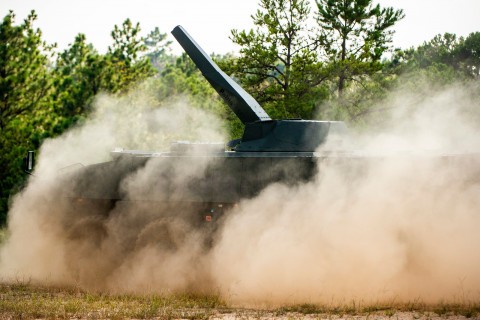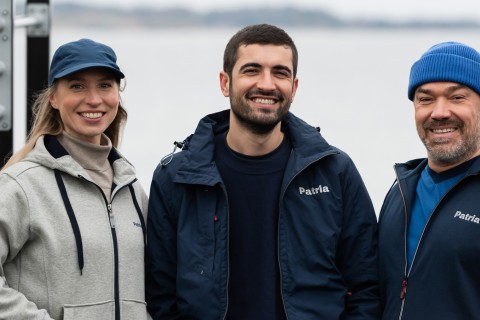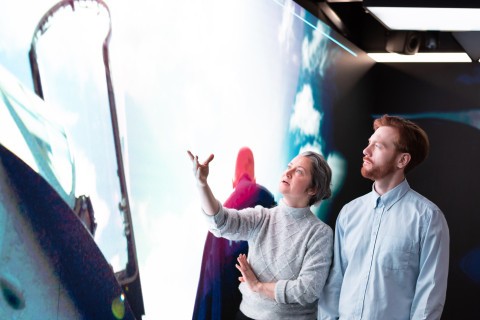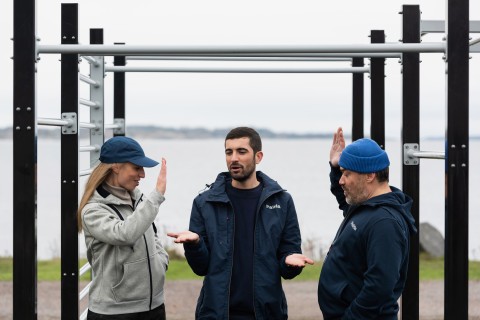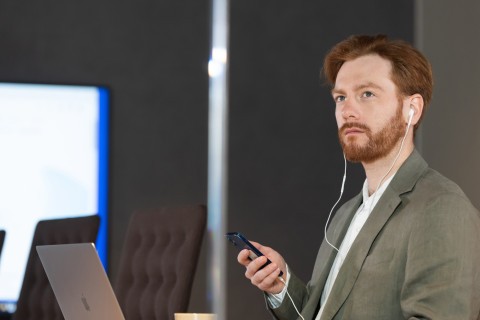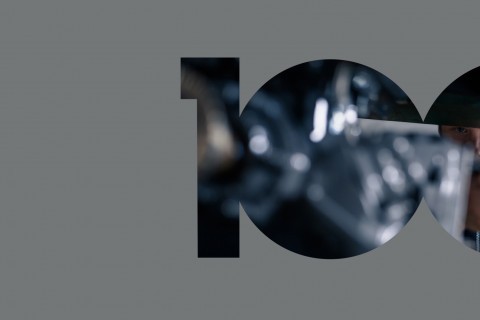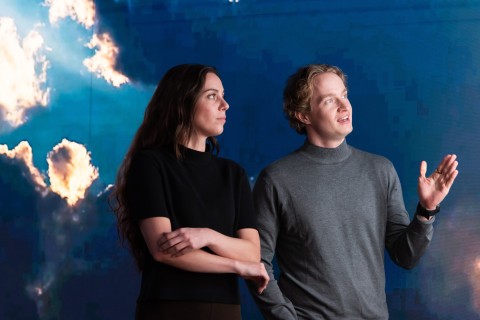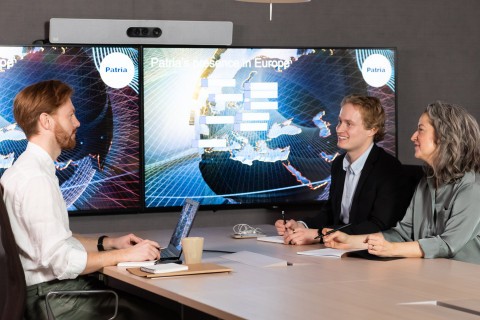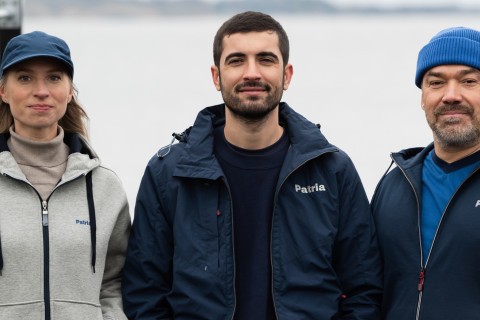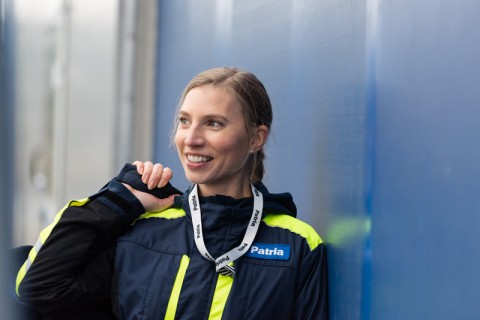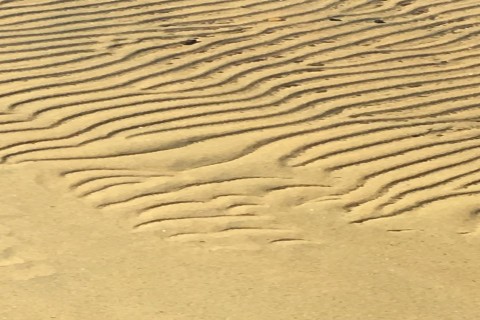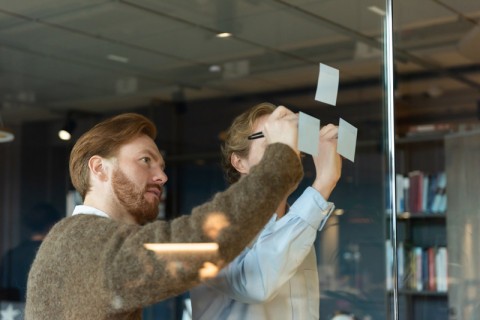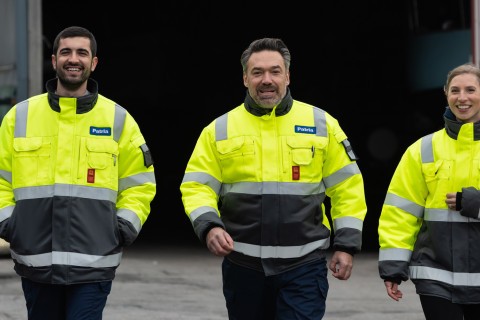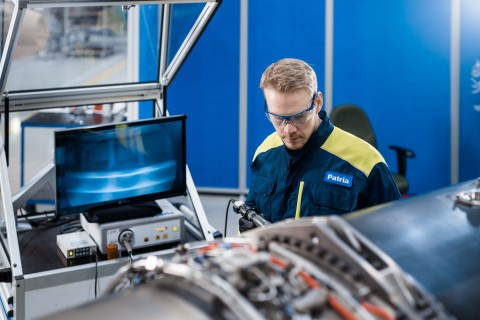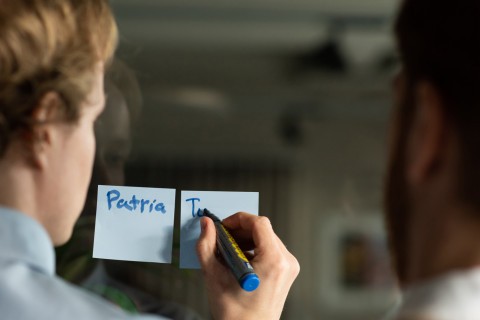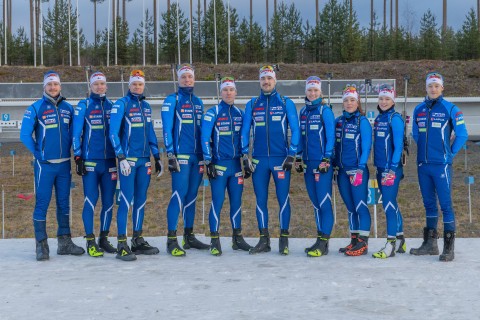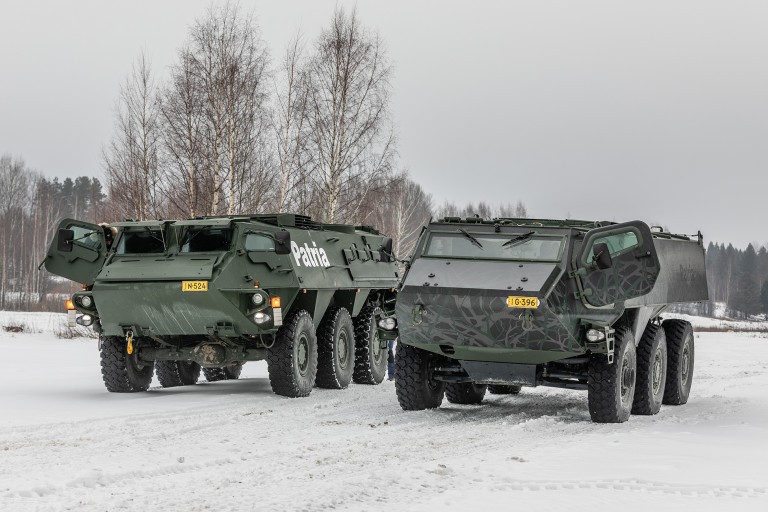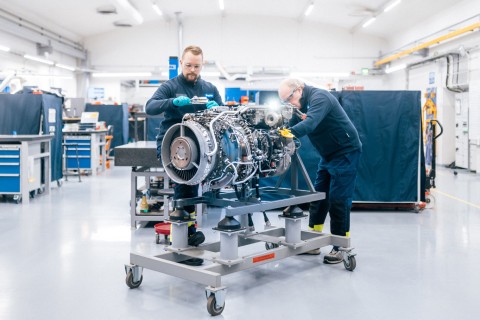
21.3.2014
Patria's new armoured vehicle concept will take performance to a new level. A key advantage of the new vehicle lies in its improved load-carrying capacity.
Text: Matti Remes
Photos: Pentti Hokkanen and Patria
Patria introduced its new armoured vehicle concept at DSEI 2013 exhibition in London, one of the world's largest international defence and security events. The Finnish company's stand was continuously crowded with visitors fascinated by this new product. “The event was a huge success. The vehicle's capabilities were demonstrated thoroughly at the launch and we received great feedback. The timing could not have been better for this new vehicle concept,” says Markku Bollmann, Executive Vice President, Marketing & Sales at Patria's Land Systems Business Unit. The huge interest shown in the new vehicle is due to its features. Based on its extensive experience in vehicle production, Patria`s new vehicle concept will raise performance to a new level and meet the future needs of customers better than ever. “One of the vehicle's key competitive advantages is its good payload to weight ratio,” states Kari Grön, Vice President, vehicles product line at Patria Land Systems. According to him, this enables the vehicle to be equipped with better mine and ballistic protection, as well as heavier weapons systems. However, the vehicle's total weight remains moderate, enabling good all-terrain mobility.
Result of two years' development
The launch event was preceded by an intensive two-year product development phase, during which the new armoured vehicle concept took shape. “The new vehicle has a similar layout to Patria AMV. However, we began development from a clean sheet rather than improving on what had gone before. Many of the solutions used are nevertheless similar to tried and tested ones,” comments Project Manager Toni Töyrylä, who is responsible for the new vehicle concept's product development. Development of the new product was based on future customer needs and the features required to meet them. Performance targets for the vehicle as a whole and for each individual structure were drawn up on this basis. “We then began reviewing the various sections of the vehicle and investigating alternative ways of achieving our objectives. Options were also explored in cooperation with material and component manufacturers,” he continues. According to Töyrylä, product development in practice consists of a lot of ordinary hard work and cooperation within Patria and with external suppliers. “Technological solutions need to take account of maintenance and repair issues, for example. These things matter, since they affect the vehicle's ease of use and maintenance costs.”
Load-carrying capacity increased by one-third
During development, particular attention was paid to the new vehicle's load-carrying capacity. The new concept is capable of carrying a 13-tonne payload, nearly one-third more than the current AMV. Ilkka Pitkänen, the director responsible for market analysis in the Patria Land Systems Business Unit, states that additional load-carrying capacity is an important consideration for customers. Pitkänen is well acquainted with the needs of vehicle users, since he worked for 30 years in the Finnish Defence Forces before joining Patria. “In addition to the level of protection, the load carried by the vehicle is increased by newly integrated weapons and communications systems. The troops being transported will also carry more personal protective equipment and devices than before,” Pitkänen points out. The achieved increase in payload has required development work on several fronts. In the vehicle's chassis, for example, the suspension and brakes have been improved. Engine power was increased to 450 kilowatts in order to guarantee good mobility. The vehicle's mobility and ease of use were further improved by the new integrated control system for all-terrain driving. Using this system, the driver needs only to select the driving conditions, and the vehicle's power unit and chassis will automatically adapt to the condition.
Weight optimisation
According to Töyrylä, the product development team can take particular pride in the fact that the vehicle's increased load-bearing capacity is not reflected in its weight. This was achieved through various solutions that save kilos in the base vehicle. “In this regard, we had to make use of the full extent of Patria's expertise. We went through the vehicle's structures and parts with precision and made use of various simulations, measurements and analyses. This enabled the product development team to identify places where the amount of material could be optimized. On the other hand, we also identified sections in need of reinforcement due to increased payload capacity. We shaved weight off some structures by using new manufacturing technology and by optimising shapes. Some lighter materials are also used in the new vehicle, including new grades of steel developed by manufacturers,” says Töyrylä. “Because price competition is stiff in the wheeled vehicle market, large-scale use of rare and expensive materials is not an option. New materials were nevertheless used for certain smaller details,” he continues. The final payload capacity of the new vehicle concept will be revealed during the testing stage. “The vehicle has a minimum load-carrying capacity of 13 tonnes. During the testing stage, we will review certain structural matters and investigate whether some of the base vehicle's structures could be further lightened. This would enable us to increase the payload yet again,” says Töyrylä in conclusion.
The product conforms to the customer's needs
Every customer has its own requirements with regard to weapons and communications systems to be mounted on the vehicle, as well as equipment required by the transported troops. The new vehicle has therefore been designed to be easily and affordably customised. “In addition to the product's technical characteristics, flexibility is required in Patria's operating methods. Our competitive advantage lies in being more agile and customer-oriented than our larger rivals,” comments Kari Grön. The body of the new vehicle is designed for maximum ease of modification. For example, space has been reserved for raising the level of protection required by the customer, without modifying the base vehicle.
The new vehicle has more interior space. The interior has also been designed to allow the modification and flexible placement of equipment.
The new vehicle has more interior space. The interior has also been designed to allow the modification and flexible placement of equipment. According to Ilkka Pitkänen, customers demand a functional interior and features such as good seat ergonomics. “This is an important consideration, since transported troops need to retain their ability to function in order to fulfil their mission as well as possible. In recent years, international operations in particular have highlighted new requirements. For example, flak vests and shoulder guards enlarge the profile of soldiers moving and keeping a lookout through hatches,” he states. “The dimensions and shapes of hatches have been reviewed to enable maximum ease of access, and the main interior space has been slightly enlarged. We also moved the benches a little further apart, which gives the crew more elbow room,” adds Töyrylä, describing the modifications.
Patria AMV will also be updated
After the launch of the new vehicle concept, it will enter a stage of intensive testing in every aspect. Kari Grön points out that the development of the new vehicle concept will also benefit Patria AMV, since it will allow the introduction of specially developed new features. “Patria AMV will be updated to meet the changing requirements of our customers. For the last decade, Patria AMV has been the market leader in modern armoured 8x8 wheeled vehicles. Patria has signed contracts for the delivery of nearly 1,400 vehicles to seven countries,” Grön states. “Patria AMV is currently the undisputed market leader and will be part of our offering for a long time to come,” Markku Bollmann concludes. This article was published in the Patria magazine in December 2013
What did you like about the article?
Thank you for your opinion! You can share the article on social media using the buttons below:
